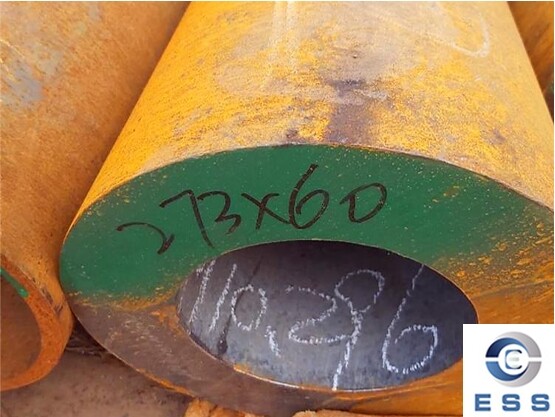
In pipeline engineering, mild
steel pipe and ductile iron pipe are two common materials, which have
significant differences in material composition, strength, corrosion resistance
and service life. This article will compare the two in detail to help choose
the most suitable pipeline material.
Material composition
Mild steel pipe is made of steel with a
carbon content between 0.05% and 0.25%. It is a carbon
steel pipe with high toughness and plasticity. Due to its low carbon
content and excellent welding performance, it is suitable for engineering
scenarios that require high-strength connections.
The material of ductile iron pipe is cast
iron, which is formed by adding elements such as nickel and vanadium to form
ductile iron, thereby improving the strength and toughness of the material. Its
unique structure makes it have both the corrosion resistance of cast iron and
the strength of steel.
Strength
The strength of mild steel pipe is higher
than that of ductile iron pipe, mainly reflected in tensile strength and
bending strength. Mild steel pipe is often used in engineering occasions with
high pressure, such as transporting oil and natural gas, for OCTG pipe and casing pipe,
etc.
Although the strength of ductile iron pipes
is not as good as that of mild steel pipes, they have excellent pressure
resistance and good impact resistance, making them suitable for municipal water
supply, drainage systems, and low-pressure gas transportation.
Corrosion resistance
Mild steel pipes have poor corrosion
resistance and are easily corroded and oxidized in humid or chemically
corrosive environments. Therefore, when using mild steel pipes, additional
anti-corrosion measures such as coating or galvanizing are usually required.
Ductile iron pipes have good corrosion
resistance and can resist erosion by soil, moisture, and chemicals, making them
particularly suitable for use in engineering occasions such as high-speed
railway subgrades.
Service life
The service life of mild steel pipes is
about 20 years. If the environment is highly corrosive and no effective
anti-corrosion measures are taken, their service life may be greatly shortened.
The service life of ductile iron pipes can
reach more than 40 years, and their long life makes them an ideal choice for
municipal engineering and infrastructure construction.
Selection suggestions
In general, mild steel pipes and ductile
iron pipes have their own advantages and disadvantages:
Mild steel pipes are suitable for
high-pressure and high-mechanical-strength occasions, but have poor corrosion
resistance.
Ductile iron pipes are suitable for
low-pressure systems such as municipal water supply, drainage, and gas
transmission, and are corrosion-resistant and have a long service life.
Summary
In summary, mild steel pipes and ductile
iron pipes have their own advantages and disadvantages, and should be selected
according to the needs of specific projects. In practical applications, it is
necessary to fully consider factors such as material strength, corrosion
resistance, and service life, and to carry out reasonable design and use.
Read more: Difference between mild steel pipe and carbon steel pipe or How long can mild steel pipes last?













 Eastern Steel Manufacturing Co.,Ltd not only improve product production and sales services, but also provide additional value-added services. As long as you need, we can complete your specific needs together.
Eastern Steel Manufacturing Co.,Ltd not only improve product production and sales services, but also provide additional value-added services. As long as you need, we can complete your specific needs together.










